A photon of UV "light" hits an oxygen molecule. The energy from the photon breaks the molecule apart. It becomes two separate oxygen atoms. This is an example of photodissociation.
Click on image for full size
Images courtesy COMET.
Photodissociation
Photons are tiny bits of light and other kinds of electromagnetic radiation. Photons can sometimes break apart molecules. When this happens, it is called photodissociation.
When a photon runs into a molecule, it adds energy to the molecule. Molecules have chemical bonds that hold the atoms in them together with each other. If the chemical bond breaks, the molecule falls apart. Sometimes photons have enough energy to break the bonds in a molecule. A photon of ultraviolet (UV) "light" has more energy than a photon of visible light. UV photons can cause photodissociation more easily than visible light photons can.
Photodissociation happens a lot in Earth's atmosphere. There are lots of chemical reactions in our air. Photodissociation provides the energy for many of those reactions. For example, photodissociation helps make smog. It also helps create ozone.
You might also be interested in:
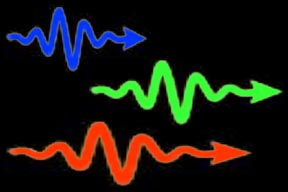
Light is very strange. Sometimes it is best to think of light as a series of waves. At other times, it is useful to think of light as a swarm of particles. When we think of light as particles, we call
...more
Electromagnetic radiation is the result of oscillating electric and magnetic fields. The wave of energy generated by such vibrations moves through space at the speed of light. And well it should... for
...more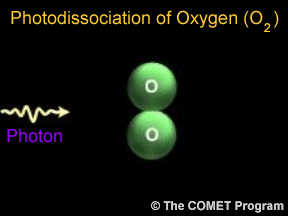
Photons are tiny bits of light and other kinds of electromagnetic radiation. Photons can sometimes break apart molecules. When this happens, it is called photodissociation. When a photon runs into a molecule,
...more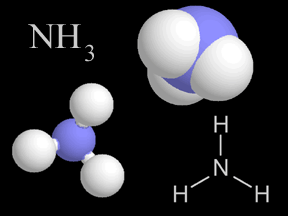
Most things around us are made of groups of atoms bonded together into packages called molecules. The atoms in a molecule are held together because they share or exchange electrons. Molecules are made
...more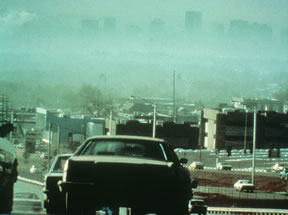
Smog is a type of air pollution. Smog is a mixture of smoke and fog. Smog usually forms when smoke from pollution mixes with fog. For example, London, England, is often very foggy. Most people in London
...more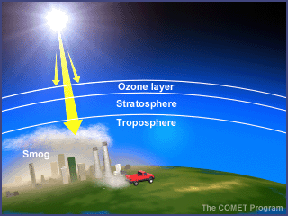
The Ozone Hole. Pollution. Skin Cancer. Why does the topic of ozone make the news so much? How important is the ozone in our atmosphere? Why are scientists so concerned about its increase near the surface
...more
The thermosphere is a layer of Earth's atmosphere. The thermosphere is directly above the mesosphere and below the exosphere. It extends from about 90 km (56 miles) to between 500 and 1,000 km (311 to
...more














